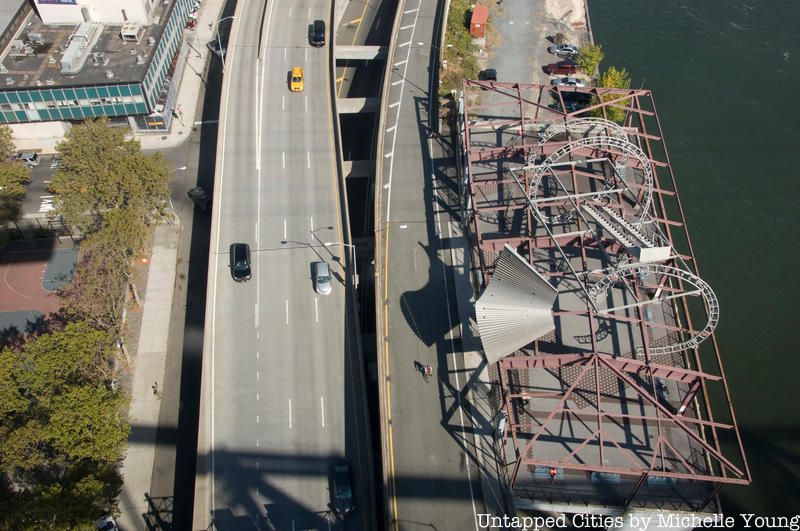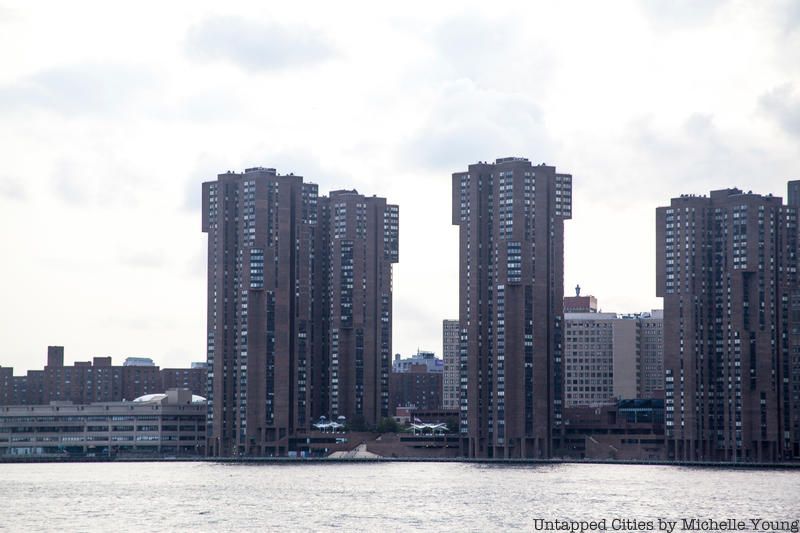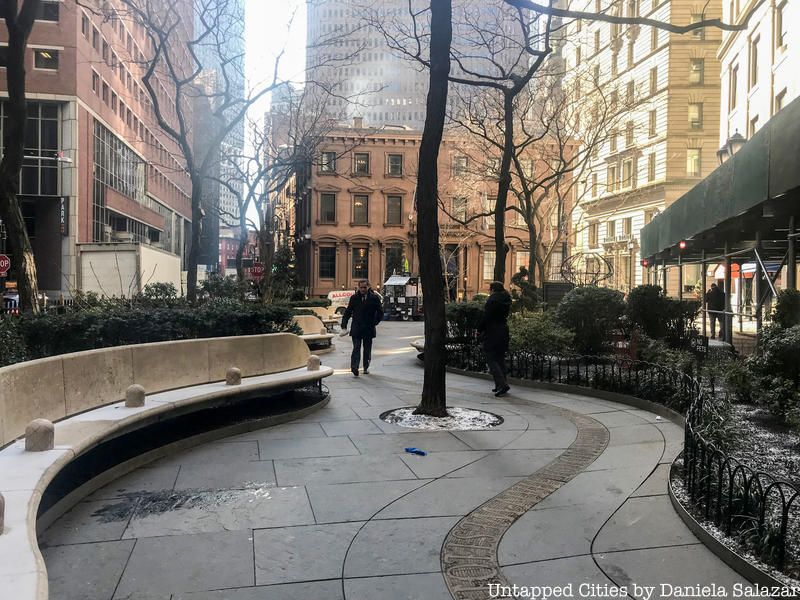Fiber Arts Take Over a Former Seaport Warehouse in NYC
See waterfalls of fabric, intricate threadwork, massive tapestries, and more!



It may come as a surprise that parts of New York City (ranging from a cherub sculpture to 11 blocks of land) are from the United Kingdom, but given the city’s colonial origins, cross-Atlantic trade, and World War II alliance, it begins to make more sense. This compilation include parts of New York City that have been moved from England to become part of the city’s land and architecture.

During World War II, the city of Bristol in the southwest of England was leveled by the Luftwaffe. Bristol was a major port for American supply ships as well as an industrial center with the headquarters of Bristol Harbour and the Bristol Aeroplane Company. As we covered in 2014, revealed in the book Rubble: Unearthing the History of Demolition, the emptied supply ships would need ballast to balance the boats for their return journey to the United States. The rubble from the Bristol bombings – masonry and more from 85,000 destroyed buildings – was used as ballast. Back in New York City, it was dumped along the East River from 23rd Street to 34th Street, later to form a portion of the FDR Drive.
The FDR Drive (or East River Drive, as it was originally called) was initially built in 1934, extending from 125th Street down to 92nd Street. By 1942, a boulevard portion was built from 92nd to Battery Park, which was then converted into a highway starting in 1948 after World War II. The Bristol ballast becomes part of the FDR because, as described by NYC Roads, “much of the East River Drive was built on fill or on pile-supported relieving platforms.”

Waterside Plaza was also built on landfill made of Bristol ballast. During and after the war, this area was more popularly known as Bristol Basin, and a plaque installed in 1942 to commemorate the exchange. The plaque was originally placed by Mayor Fiorello LaGuardia on a “footbridge that leads to the river,” reports The New York Times but now sits in Waterside Plaza. The English-Speaking Union of the United States provided for the plaque, arranged for a plaque, which LaGuardia placed on a footbridge leading to the river.
The plaque reads: “Beneath this East River Drive of the City of New York lie stones, bricks and rubble from the bombed City of Bristol in England. Brought here in ballast from overseas, these fragments that once were homes shall testify while men love freedom to the resolution and fortitude of the people of Britain. They saw their homes struck down without warning. It was not their walls but their valor that kept them free. And broad-based under all is planted England’s oaken-hearted mood, as rich in fortitude as e’er went worldward from the island wall.”
The plaque was was rededicated in 1972 by the actor Cary Grant, a Bristol native whose family survived the bombings.

Hanover Square, located downtown on Pearl Street, is named in tribute to the English House of Hanover, the family of King George I. Starting in 2005, the British royal family began the transformation of this park into a commemorative one, honoring the 67 British citizens who lost their lives on 9/11. Now known as the Queen Elizabeth II September 11th Garden, the park was built by English landscape designers Julian and Isabel Bannerman. There are two portions of stone from the United Kingdom in this park.
As the website for the garden describes, a “ribbon of Morayshire sandstone–quarried from the Highlands of Scotland–wraps around the horticulture. A geography lesson, the sandstone is inscribed with the shires of the British Isles – from Aberdeen to Portland. The ‘Braemar’ stone, worn smooth over the years by the rushing waters of the River Dee near HM The Queen’s home in Balmoral, sits in the South end of the Garden marking the distance from New York to Aberdeen.”

The smallest item in this article that was moved from England and used in New York City’s architecture is a stone cherub on Trinity Church, from a Christopher Wren-designed church in London. The church of St. Mary-le-Bow was destroyed by the German blitz, but this cherub was found on the site during its reconstruction and gifted to Trinity Church in New York, its sister church, as a thank you for its financial contributions.
A plaque, also dedicated by Mayor LaGuardia, dubbed this entrance on Church Street, Cherub Gate. It reads:
“The cherub above is a gift to Trinity Church from the Church of St. Mary-le-Bow in London which was designed by Sir Christopher Wren in 1680 and was destroyed in an air raid on May 10, 1941. The cherub survived the bombing and was presented to Trinity Church on Jun 11, 1964.”
Do you know of more? Let us know in the comments are via Twitter @untappedcities. Next, check out the Remnants of Penn Station.
Subscribe to our newsletter